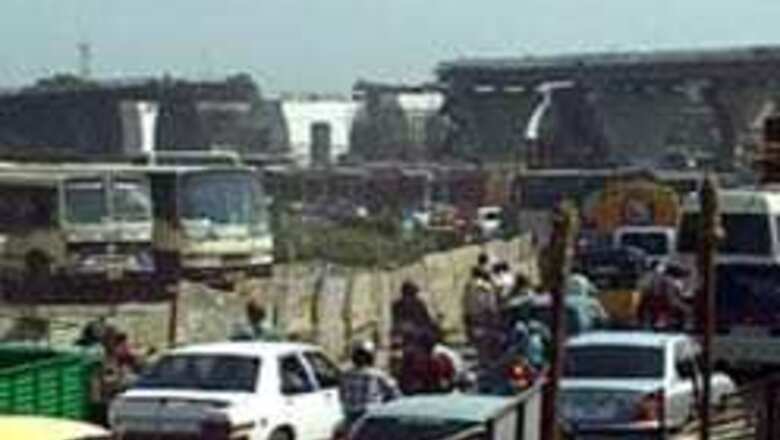
views
New Delhi: The new 32-lane toll plaza outside New Delhi is one of Asia's biggest and a gateway to India for many foreigners, but traffic snarls have made headlines and underscored India's unsteady pace of infrastructure development.
Inaugurated last month, the flagship 28-km highway linking New Delhi to the international airport, the tourist state of Rajasthan and the IT hub of Gurgaon, home to many multinationals, was meant to cut journey times. But poor sign posts, a lack of monthly passes and what local media calls the "poor etiquette" of drivers trying to jump or switch queues or buses using car lanes, has led to waiting times of up to 45 minutes for drivers at the highway's toll plaza.
"The current toll plaza mess in Gurgaon has national relevance -- of how bad planning can turn a dream project into a nightmare," an editorial in the Times of India said. The toll plaza is part of billions of dollars of infrastructure being poured into the capital ahead of the 2010 Commonwealth Games, when India hopes to showcase Delhi as a global capital worthy of India's growing economic punch. The toll delays may just be a hiccup in an otherwise impressive project.
But, two years behind schedule and immersed in red tape problems from the start, the privately built highway shows one of India's growth dilemmas. While India's highways, ports and power stations are improving and expanding, the question is whether the speed and quality of development is fast enough to avoid economic bottlenecks that threaten India's nearly 9 percent growth.
Red tape, regulatory and pricing problems and land disputes could all slow down India's ambitious infrastructure plans. "Infrastructure is being improved. But economic growth is even faster" said D.K. Joshi, chief economist at the credit ratings agency Crisil. "Highways are often a success story in India but it is very clear to see from the congestion that it's not enough. And this issue is not just funding, but the quality of the projects."
The government says $494 billion in infrastructure is needed by 2012, but only $330 billion is in the pipeline.
The Gurgaon highway should transform foreigners' first impressions of India. Before its inauguration, visitors coming from the international airport to Delhi or Gurgaon faced a dusty road filled with trucks, rickshaws and the occasional cow. But, so far, its problems have made the headlines. A toll fee of 11 rupees led to shortages of change.
Drivers complained about barriers falling too early onto their cars. Still, many public projects in Delhi are impressing visitors. The air-conditioned Delhi metro, widely seen as one of India's most successful projects, is expanding.
New highways linking Delhi to its satellite cities are welcomed by residents. India's international airport, widely derided by travellers as a throwback to state-run dinosaurs with its peeling ceilings and a scarcity of shops, is slowly being overhauled.
It may be too slow to make up for decades of under-investment when India was derided for its "Hindu" growth rate of 3 percent. When Prime Minister Manmohan Singh returned from a visit to China in January, where he was shown the huge infrastructure projects built for the Olympic Games, he was reported to have called on Delhi's Commonwealth Games preparations to speed up.
Singh's worry reflected how many business visitors see India after the sight of China's massive infrastructure projects. "I'm always bullish on India until I get here" said a well-travelled senior western banker, who asked to remain anonymous because he was not entitled to speak for his bank.
Many Commonwealth projects in Delhi, including flyovers, new stadiums and an athletes village, are already behind schedule, facing a tangle of red tape among different agencies. When the Gurgaon highway was finished, it remained closed for weeks because of delays in finding a "VIP" to formally open it.


















Comments
0 comment